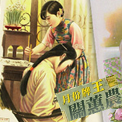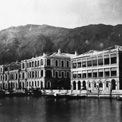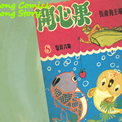In the late 1960s and early 1970s, the newspaper was a primary channel through which citizens obtained information about society. For the government, it was a means both to access the sentiments of the public and to distribute information to it. The Hong Kong Festival was an item into which the government invested an immense amount of energy and material resource, and, not surprisingly, it paid great attention to newspaper reports in order to understand how society responded to the event.
A newspaper file on the Festival created by the Government Information Services at the time provides a valuable opportunity to study the strategy used in scrutinizing public opinion. The “Chinese Press Review” classified the newspaper reports of 18 December 1969 into “Non-leftist newspapers” and “Leftist newspapers”. The former applauded the organization of the Festival for giving citizens an enjoyable time, demonstrating that Hong Kong had recovered from the troubles of 1967 and showing the people’s sense of belonging. The latter, however, condemned it for being only a facade of prosperity that concealed the deep problems of society. Listed in point by point, the Government Information Services had given much space for the favourable comments that supported the need to continue mounting the Festival and offered positive suggestions to improve the Festivals, which consequently strengthened the voices of support. Opinions expressed in newspapers such as “Kung Sheung Evening News”, “Sing Tao Daily”, “Sing Tao Evening Post”, “Wah Kiu Yat Po”, and “Hong Kong Times”, which were generally favourable, were given more weight by the government; the articles were translated into English and filed in the “Chinese Press Review”.
These newspapers are valuable documents that provide details of activities organized at all levels – from the centrally planned territory-wide spectacles such as the Grand Procession to small, district-based athletic meets. They are rich resources for those interested in how different sectors, groups and levels of society took part in this historical event. Moreover, they give us a chance to analyse how society could be represented through the filters of editorials and commentaries.
Apart from the newspapers, the late 1960s and early 1970s also witnessed the circulation of publications from tertiary institutions, secondary schools and local associations beyond their immediate networks. The most effective instruments in articulating the voices of ordinary people include Hong Kong Federation of Catholic Students’ “Shu hui” , Yellow Dragon of Queen’s College and the Chinese Students’ Weekly. The last publication, in particular, was greatly loved by young people. It carried many articles related to the Festival between December 1969 and December 1973, representing a broad spectrum of views and writing styles. There were serious discussion sternly pointed out that ordinary people were unable to really enjoy the festivities because they did not share the economic prosperity. There were short pieces presenting the personal reflection of the authors. Others took on a sarcastic style. In one of the articles, “Let’s chat about Hong Kong Festival”, for instance, appears to be a casual conversation of two ordinary citizens, yet mocking the Festival’s symbol for looking like a football which could be “kicked by anybody at will” (no. 908, 12 December, 1969). The Weekly allowed different voices to be heard: some authors encouraged readers to engage themselves in the Festival while others took a more cynical and detached stand. This pluralistic mix of supportive, critical and cynical stands made The Chinese Students’ Weekly a special and unique non-mainstream publication of the time.
Due to copyright restrictions, the newspapers, essays and publications mentioned above cannot be displayed here. Readers may access some of them in the following sites:
For the full text of Chinese Students’ Weekly, please visit
https://hklit.lib.cuhk.edu.hk/explore/#/browse/source/journals_with_full_text/%E4%B8%AD%E5%9C%8B%E5%AD%B8%E7%94%9F%E5%91%A8%E5%A0%B1
For old newspapers, please visit
http://mmis.hkpl.gov.hk/
Many old newspapers and publications of different associations are collected at the Special Collections of the University of Hong Kong Libraries.
Documents
- Chinese Press Review No.52: Futher comments and reports on the Festival of Hong Kong
- Chinese Press Review No.47: public responses to the Festival of Hong Kong collected by Chinese newspapers
- Chinese Press Review No.44: the Festival of Hong Kong
- Chinese Press Review: A holiday for the Festival of Hong Kong
- Report on the Festival of Hong Kong by the Central District Office
- Festival of Hong Kong 1969: Report from Eastern District
- Memo of Mong Kok District Office on the Festival of Hong Kong in 1969
- Memo from the District Commissioner on the Hong Kong Festival in 1969
- Report on the Festival of Hong Kong (Western District)
- Report on Festival of Hong Kong 1969 (Wong Tai Sin District)





